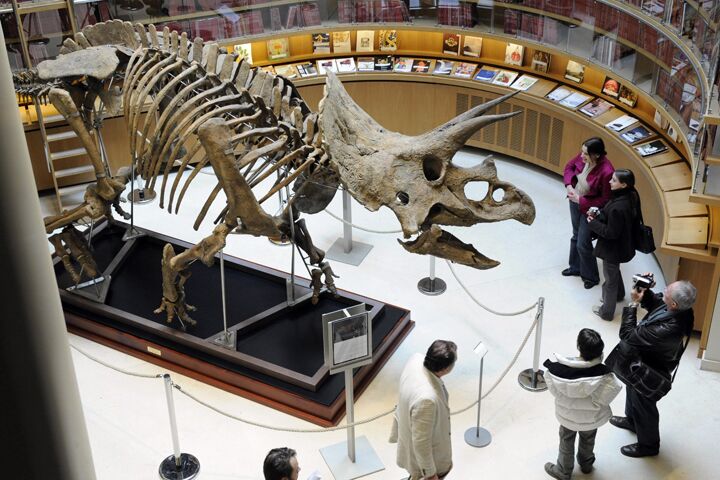
Triceratops Controversy or Paleo-Hypocrisy?
There is a great Triceratops controversy rocking the world of paleontology: How many species of the three-horned dinosaurs actually existed? But buried in the debate, one scientist reveals a big problem with evolution.
A new paper, published in the journal PLoS ONE, argues that Triceratops and the similar-looking Torosaurus were different species and not just juvenile and mature bones of the same species.
Nicholas Longrich, a researcher at Yale University, says that his analysis shows that Torosaurus and Triceratops are different species. Conversely, John Scannella from Montana State University argues that bones that are classified as Torosaurus are really just the adult bones of the smaller Triceratops. Triceratops were really just baby Torosuaruses, he says.
Looking at the skull bones of Triceratops and Torosaurus it is clearly evident that there are similarities and differences. According to Scannella, the differences are explained by the different developmental stages of the reptile. It is kind of like how adult human skeletons are different from teenagers, he says.
Yet, Longrich vehemently disagrees. He says for this to be true, the fossils must pass three testable requirements. First, the two types of fossils must be found in the same locations. Where adults are, there should be juveniles. According to LiveScience staff writer Jennifer Welsh, this seems to hold up.
Second, if Torosaurus was the adult, then all Triceratops bones should have juvenile traits and characteristics such as unfused bones. For this, the evidence seems to be mixed.
Thirdly, according to Longrich, if Triceratops matured into Torosaurus, researchers should have found at least some examples of intermediates by now. “If there really was a transformation from one to the other, we would find skulls from the intermediate states,” Longrich said. “It’s really hard to believe that we just haven’t found them.”
Did you catch that? Here is an evolutionist admitting that to believe that Triceratops grows into an adult with different bone structure, there must be evidence of intermediates. If this was true, there needs to be evidence in the fossil record, he says.
Without the fossil evidence of transitional Triceratops (Triceratops of a progression of maturity) the theory falls apart, he says.
Yet, if you were to ask a scientist such as Longrich if he believes in the theory of evolution, like most scientists, he would probably think you were crazy for even asking.
But here is the problem. Despite hundreds of years of searching, and multiple millions of spent man-hours, there has never been a single confirmed transitional fossil found. Not one. Nada. Zip.
Not once has a single scientists found a “missing link.” Think about that.
If evolutionary theory was true, there should be millions and billions of transitional fossils showing every single stage of gradient in evolutionary transition. As each species of organisms evolved into another species they would have left their bones behind, just like every other distinct organism has.
But the bones aren’t there.
According to Longrich, the theory of Triceratops-maturing-to-Torosaurus falls apart because there are no transitional fossils showing a progression of maturity. But why hasn’t it occurred to him that for the same reason the whole theory of evolution falls apart too?
It really is very simple. If there are no bones of transitional species, there can be no basis for believing in evolution.
In the words of Yale’s Nicholas Longrich, it is really hard to believe we just haven’t found them yet.
